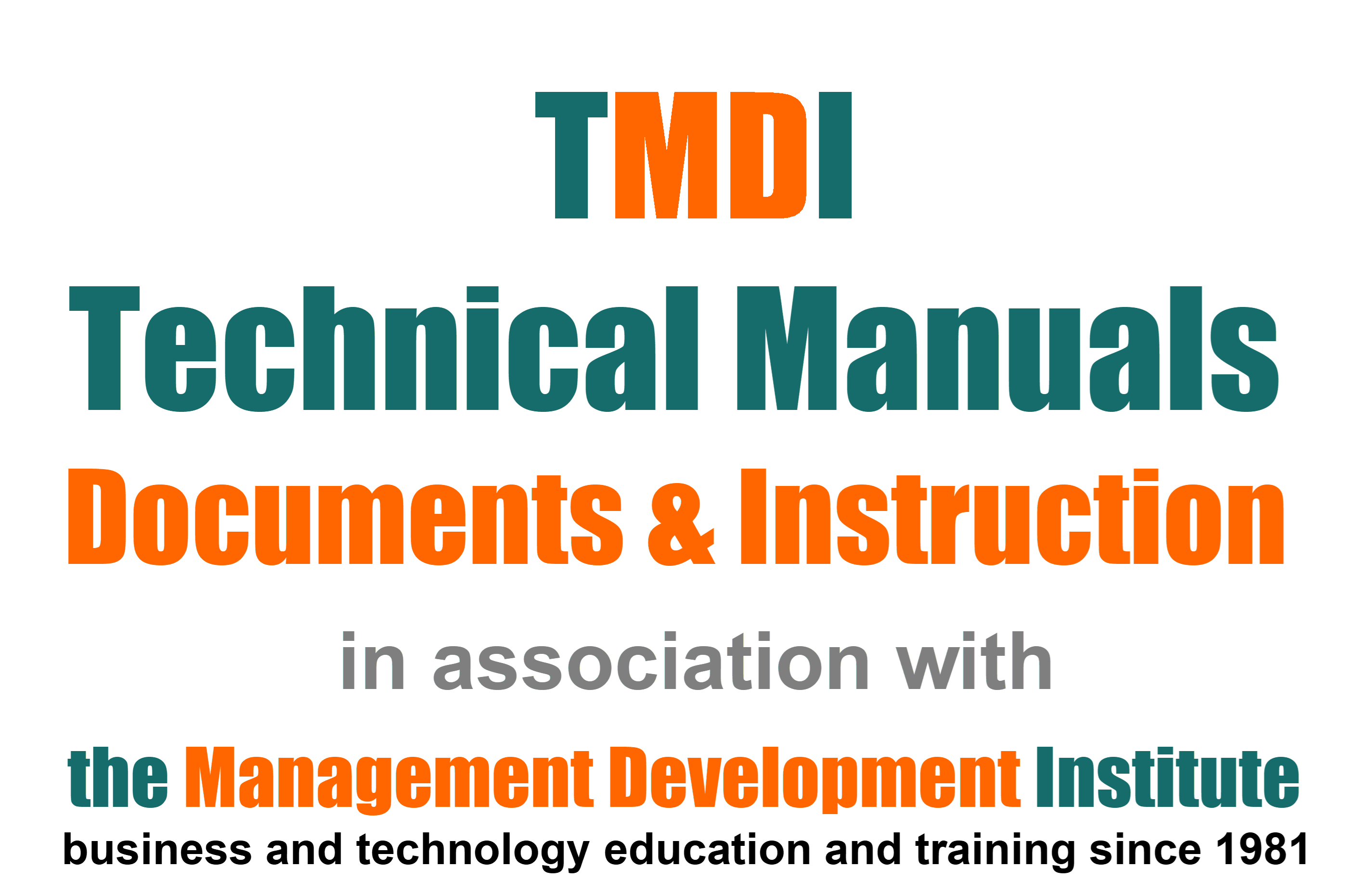 |
Document Management Systems
A document management system (DMS) is a suite of computer programs which store, retrieve and track
electronic documents. TMDI is vendor independent so we focus firstly on ensuring that existing corporate DMSs are being used
effectively – we do not implement DMSs. Most DMSs usually track all document versions, modified by multiple users.
The term DMS has some overlap with content management systems (CMS) which are a often part of enterprise content
management systems (ECMs) and are related to digital asset management, document imaging, workflow systems and records management systems.
While many DMS store documents in their native file format (Microsoft Word or Excel, PDF), some web-based systems
store content in the form of html, which require content to be imported into the system. However, once imported, the
software acts like a search engine so users can find documents faster. The html format enables more efficient search
capabilities such as full-text searching and stemming.
DMSs commonly provide storage, versioning, metadata, indexing, retrieval and security capabilities.
A brief description of these components follows:
Metadata
Metadata is simply data about data, which is a description and context of the data and helps to organise,
find and understand data, typically stored for each document. Metadata elements in a document may include:
its title and description
tags and categories
who created it and and when
who last modified it and when
who may access or update it
The DMS may also extract metadata from the document automatically or prompt the user to add metadata.
Some systems also use optical character recognition on scanned images, or perform text extraction on electronic documents.
The resulting extracted text may help users locate
documents by identifying probable keywords or providing full text search capability, or may be used on its own.
Integration
Some DMSs attempt to integrate document management into other applications, so
users can retrieve existing documents directly from the DMS repository, make changes, and
save the changed document back to the repository as a new version, all without leaving the application.
Such integration is commonly available for office suites and e-mail or collaboration applications.
Integration often uses open standards such as ODMA, LDAP, WebDAV and SOAP to enable connectivity with other software
and compliance with internal controls. More about these abbreviations later.
Capture
Capture primarily involves accepting and processing images of paper documents from scanners or multifunction printers.
Optical character recognition (OCR) software is often also used to convert digital images into machine readable text,
whether integrated into the system or as a separate application.
Optical mark recognition (OMR) software may also be used to extract values of check-boxes or bubbles and capture may
also involve accepting electronic documents and other computer-based files.
Validation
Visual validation registration system and important data. E.g. document failures, lack of bells, missing signatures,
misspelled names, this can be printed on paper documents or images on paper.
Indexing
Indexing enables the tracking of electronic documents. Indexing simply track unique document identifiers, but is
generally more sophisticated, enabling classification through the documents' metadata or word indexes extracted
from the documents' contents.
Indexing exists mainly to enable document retrieval, particularly rapid retrieval
by an index topology used for scientific applications.
Storage
Storage of electronic documents often includes: their management, where they are stored, for how long, their migration
from one storage media to another (hierarchical storage management) and eventually their archiving or destruction.
Retrieval
The concept of document retrieval is simple, however, retrieval in an electronic context can be complex. Simple retrieval of
individual documents can be enabled by users specifing a unique document identifier. The system then uses a basic index
(or a non-indexed query on its data store) to retrieve the document.
More flexible retrieval may allow users to specify
partial search terms such as a document identifier and/or parts of the anticpated metadata. Such a search would typically return
a list of documents which match the user's search terms.
Distribution
A document published for distribution should be in a standard format. As a common practice in regulated industries is to securely
store a master copy which is never used for distribution, other than archiving.
If a document is to be distributed electronically
in such a regulatory environment, the distribution hardware and software must be quality certified and validated and only electronic distribution
carriers may be employed.
Security
Document security is critical for most DMSs. Compliance requirements can be complex and breaches can incur significant penalties.
Some DMSs include a rights management module that enables an administrator to grant access to classified documents only to appropriately
certified people or groups of people.
Document marking at the time of printing or PDF-creation may also be used to prevent alteration or unintended use.
Workflow
Managing workflow is potentially complex and some DMSs include a workflow module. Requirements depend on the environment in which the DMS is
used. Manual workflow requires users to be able to view a document and decide who should have access. A rules-based workflow process enables
a DMS system administrator to create rules to control document flow within the organisation.
Collaboration
Collaboration should be inherent in a DMS. A collaborative DMS should enable documents to be retrieved and amended only by
authorised users and access might be blocked to other users while work is being performed on the document. Indeed many
modern systems enable collaboration among multiple users to view, modify or markup a document simultaneously.
Versioning
Versioning is a process by which documents are checked in or out of the DMS, enabling users to
retrieve previous versions and to continue work from a nominated point. Versioning is useful for documents that change
over time and require updating, but it may be necessary to revisit or reference a previous version.
Searching
Searching is the process of locating documents and or folders using template attributes or full text search. Documents can be searched using
various attributes and/or document content.
Publishing
Publishing a document typically involves a process which includes drafting, authoring, proofreading, peer or public reviewing, authorising, printing and
approving etc. Those steps are important and will vary depending om the nature and purpose of the document and its intended distibution.
In legally regulated industries, some of these steps may need to be completed and evidenced by appropriate dated signatures.
Published documents should be in a format that is not easily altered without a specific knowledge or tools, and yet is read-only or portable.

Reproduction
Document/image reproduction is key when thinking about implementing a system. Storing documents in a DMS is just one step,
but how to get them out in a useful format must be considered, such as reproducing building plans.
Document control
Documents stored in a document management system, provide evidence of documents under control.
Failing to properly control documents may result in fines, the loss of business, or reputational damage
When working in an environment that requires document control, useful procedures to document include:
• Reviewing and approving documents prior to release
• Reviews and approvals
• Clearly identify changes and revisions
• Clearly show relevant versions at their “points of use”
• Ensure that documents are legible and identifiable
• Identify and control third party documents, such as customers' or suppliers' manuals
• Prevent “unintended” use of obsolete documents
Integrated document management is the technologies, tools, and methods used to capture, manage, store, preserve, deliver
and dispose of 'documents' across an enterprise. In this context 'documents' may include a myriad of information assets
including images, office documents, graphics, drawings and electronic documents such as Web pages and email, sms
messages or video.
|



